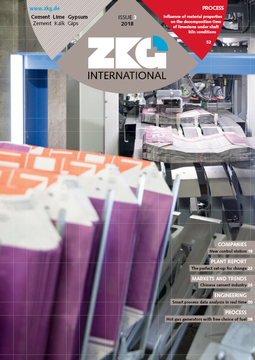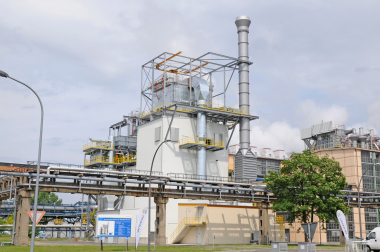Cement plant equipment market to reach US$ 9.0 billion by 2022
According to CW Research’s recently published World Cement Equipment Market and Forecast Report, the market for cement manufacturing related equipment and services is projected to reach US$ 9.0 billion by 2022. However, as greenfield cement plant projects remain scarce, upgrades to existing cement plants will become relatively more important; equipment relating to upgrades (i.e., excluding service-related spending) will move from representing a quarter of the total cement manufacturing equipment capital spending in 2017 to over 40 % by 2022.
Consequently, notably what CW Research defines as “functional” equipment (i.e., conveying, automation, filtering, environmental control, etc.) will be a central growth driver for cement plant-related equipment sales over the next five years. Informed by extensive primary research conducted with both suppliers and end users across the cement equipment value chain, the CW Research study emphasizes that behind the growth remains an ever-expanding focus on automation, control, environmental concerns, and testing throughout the production processes to deliver higher efficiency and performance.
Project scarcity increasing competition
With a global dearth of cement production capacity expansion projects, equipment suppliers have been facing a tough down-cyclical market. New equipment orders are relatively scarce, and competition to win orders is very high. The cost in US$/t of cement production capacity has continued to fall; the average price per ton of cement production capacity for a turnkey cement plant has fallen by about 15 % since 2008.
Given the cement plant expansion and upgrade market dynamics, CW Research expects prices to fall by an additional over 5 %. Cement plant equipment types that do not require complex engineering or proprietary technology – or demand greenfield projects –, such as kilns and precalciners, are expected to further commoditize and continue to face even harsher price erosion.
The expansion of the upgrade and spares segments will be underpinned by cement manufacturers’ shifting capital expenditure and strategic priorities. CW Research projects the market for upgrades and spares to amount to US$ 3.3 billion, with China accounting for 44 % of the market. Globally, by 2022, the upgrades and spares segments are projected to expand the fastest, reaching close to US$ 5 billion.
Western/Chinese equipment price gap narrows
Over the last five years, competition between Western and Chinese manufacturers has intensified, but the pricing gap between them is likely to gradually become narrower in the next five years. In 2012, the average price extended by a Chinese supplier for a new project would be less than half of its western counterparts. That is no longer the case.
One of the consequences is that market shares for key production equipment segments are also changing, as producers jockey for relatively fewer orders compared to the preceding 5-10 year period. Turnkey Western equipment producers, such as FLSmidth, ThyssenKrupp, or KHD Humboldt, are becoming increasingly competitive with Chinese suppliers, including Sinoma and CNBM and their sub-units (e.g., TDCRi), reclaiming increasing shares outside China. For large Western manufacturers, competitiveness with Chinese suppliers is oftentimes met on their home turf – through lowering production costs by moving manufacturing and fabrication the equipment to China, for instance.
Within the cement mill segment (including vertical roller mills, ball mils and roller presses), as well as the clinker cooler segments, market shares have been evolving, as CW Research points out in the report, which shows market shares for top suppliers (including Loesche, Gebr. Pfeiffer, IKN, Christian Pfeiffer, Fives FCB, FONS and many others) across key cement manufacturing segments. The mill segment (together with a few other cement plant equipment segments, such as packing and palletizing and clinker coolers) has remained firmly in control of Western suppliers, even as Chinese EPC (Engineering, Procurement and Construction) solution providers have won the orders. Oftentimes, even though the overall plant project is awarded to a Chinese company, the mills (and other specific sub-systems) are specified by the client to be provided by companies such as Loesche or Gebr. Pfeiffer. Conversely, some segments are firmly rooted in Asian suppliers. Notably waste-heat recovery electricity generating systems, which originate from their widespread use in China and Japan, in particular with regional champions (e.g., Anhui-Kawasaki) dominating this segment.
//www.cwgrp.com" target="_blank" >www.cwgrp.com:www.cwgrp.com



